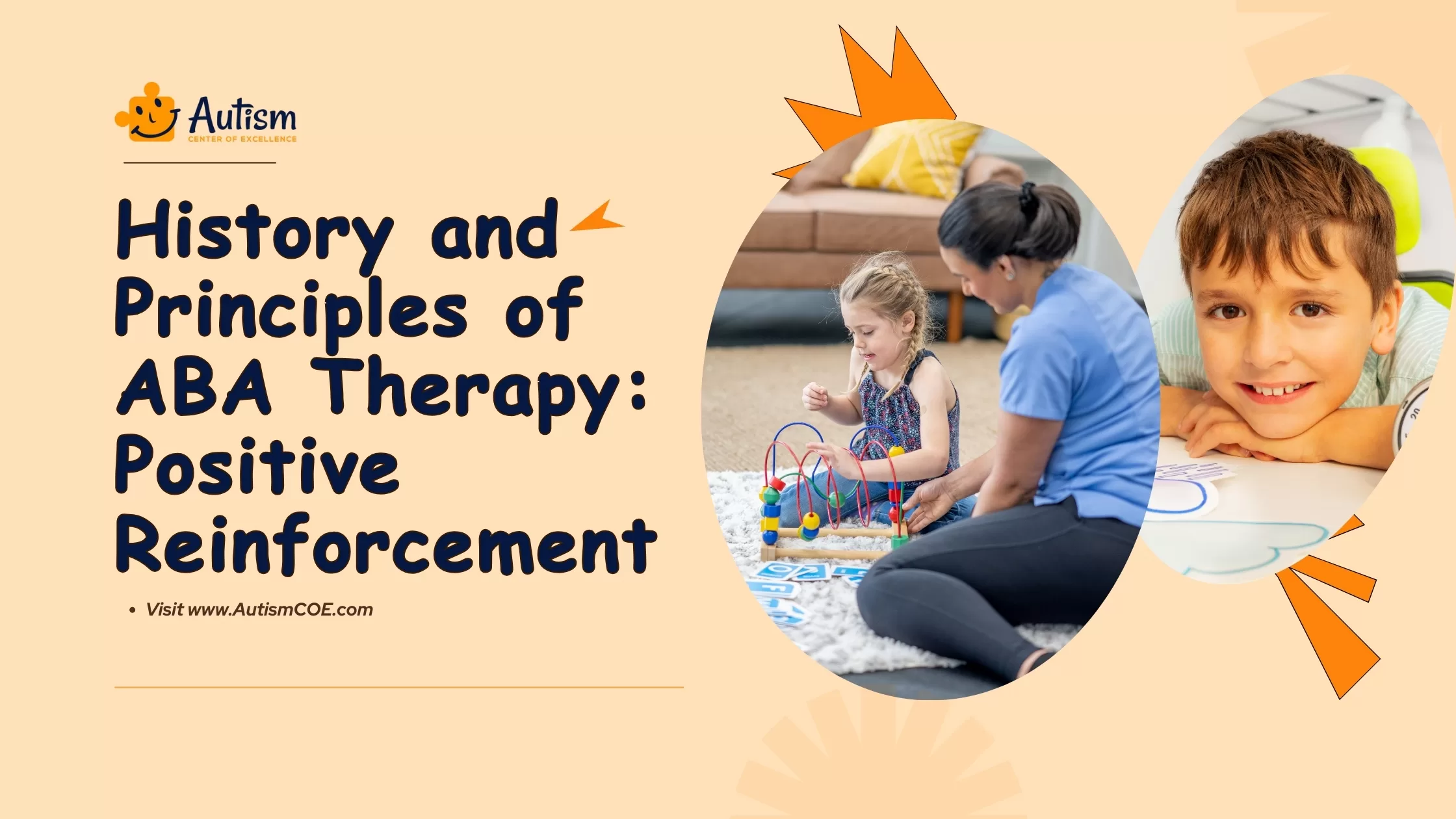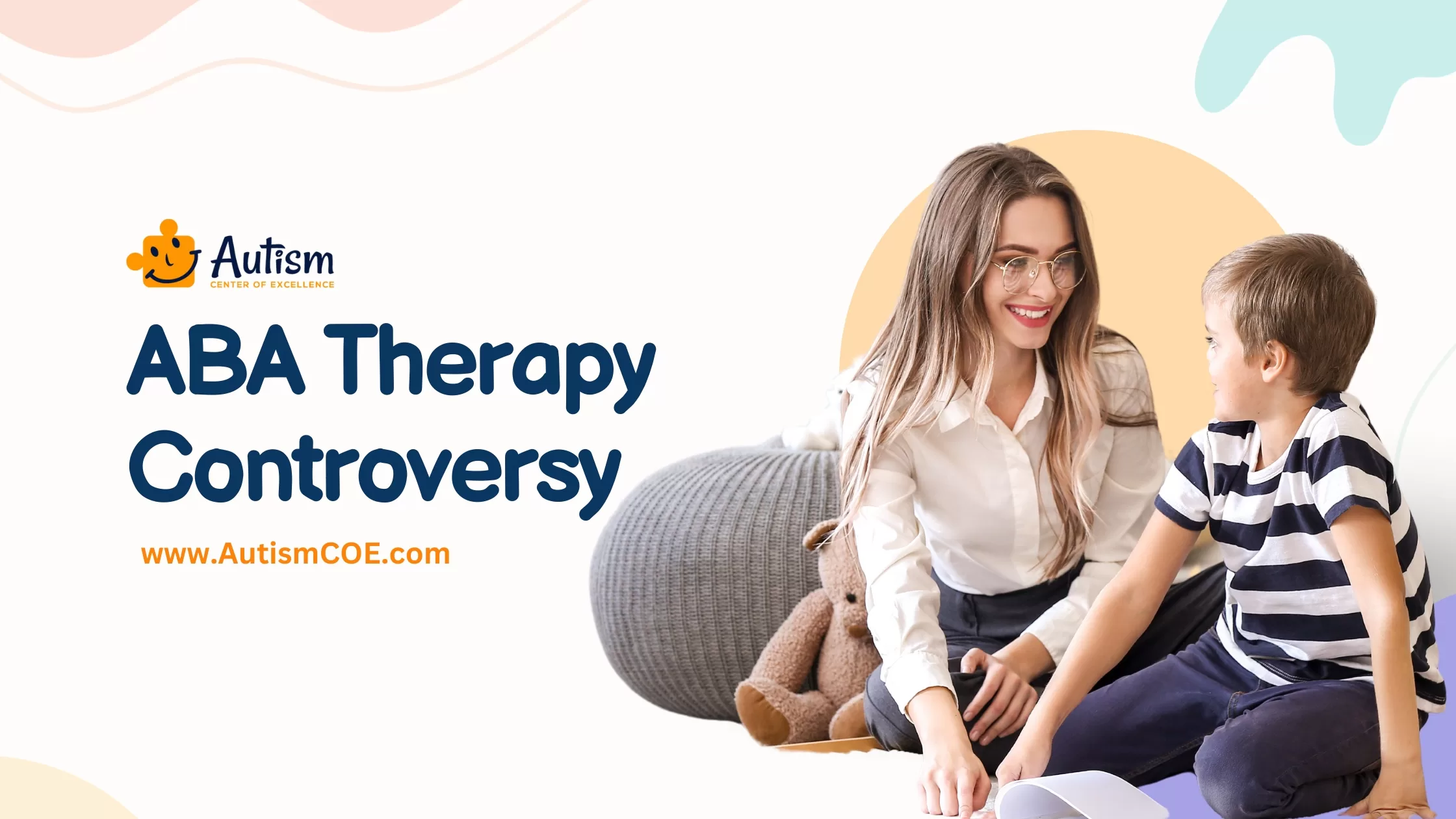ABA (Applied Behavior Analysis) therapy is a method used mainly for people with autism. It focuses on changing behaviors through rewards and consequences, aiming to help autistic children improve learning and daily life skills. Some people believe it helps improve learning and daily life skills, but others have concerns about its effectiveness and approach.
What is ABA Therapy?
Applied Behavior Analysis (ABA) therapy is a specialized form of behavioral therapy designed to help individuals with Autism Spectrum Disorder (ASD) and other developmental disabilities. The core principle of ABA therapy is to increase desired behaviors and reduce undesired behaviors through a structured, scientific approach. By focusing on behavior analysis, ABA therapy aims to teach new skills, reduce problematic behaviors, and ultimately improve the quality of life for those with ASD. This method is widely recognized for its effectiveness in helping individuals develop essential skills and gain greater independence.

History and Principles of ABA Therapy: Positive Reinforcement
ABA therapy started in the 1960s with researchers who wanted to understand and influence behavior positively. It uses rewards and consequences to teach new skills and improve behaviors. Over time, ABA has changed, and new concerns have come up about whether its methods are always respectful and appropriate for everyone. These goals are often achieved under the guidance of a board certified behavior analyst, ensuring that the therapy is conducted by qualified professionals.
Goals and Objectives of ABA Therapy
The primary goals of ABA therapy are multifaceted, aiming to enhance the overall well-being of individuals with autism. Firstly, ABA therapy seeks to increase desired behaviors, such as communication skills, social skills, and daily living skills, which are crucial for personal development and social integration. Secondly, it aims to reduce undesired behaviors, including self-injurious behavior, aggression, and tantrums, which can hinder an individual’s ability to function effectively in daily life. Lastly, ABA therapy strives to improve the overall quality of life for individuals with ASD by fostering greater independence, enhancing social interactions, and promoting active participation in everyday activities.
Join Our Weekly Newsletters!
Subscribe now to stay updated with our latest email updates.
Modern ABA Therapy Practices
Modern ABA therapy practices have significantly evolved to become more individualized and flexible, catering to the unique needs and preferences of each person. One of the key features of contemporary ABA therapy is the use of positive reinforcement, where desired behaviors are encouraged through rewards and praise. This approach helps in reinforcing desired behaviors effectively. Additionally, ABA therapy is often conducted in naturalistic settings, such as the home or community, to ensure that skills learned are applicable in real-life situations. Family involvement is another crucial aspect, as collaboration with family members ensures that the therapy aligns with the individual’s needs. Moreover, the integration of technology, such as tablets and apps, has made ABA therapy more engaging and motivating for individuals.
Arguments Supporting the Effectiveness of ABA Therapy
Many people share success stories of ABA therapy helping children with autism learn new skills. It has been effective in improving communication and social skills. Professional endorsements, such as those from the CDC and the National Institute of Mental Health, highlight its structured approach and positive results. You can learn more about these endorsements from the CDC and the NIMH.
Criticisms and Concerns About ABA Therapy Controversial
Critics, including members of the autistic community, argue that ABA therapy can sometimes be too rigid and may not always consider an individual’s feelings or preferences. There are concerns that it might be harmful if it focuses too much on changing behaviors without respecting the person’s needs. Ethical concerns also arise about whether ABA respects individual autonomy and personal choices. For further insights into these criticisms, visit the Autistic Self Advocacy Network.
Insurance and Funding
ABA therapy is frequently covered by various insurance plans, including private insurance and Medicaid. However, the extent of coverage can vary depending on the state and the specific insurance provider. Some states have enacted laws mandating insurance companies to cover ABA therapy for individuals with ASD, ensuring broader access to these essential services. Additionally, several organizations and foundations offer funding and financial assistance for ABA therapy, helping families manage the costs associated with this treatment. It’s important for families to explore these options and understand the coverage details to make informed decisions about their therapy choices.
Alternative Approaches to ABA Therapy
While ABA therapy is a widely accepted and evidence-based treatment for ASD, some individuals and families may prefer alternative approaches. These alternatives include occupational therapy, which focuses on developing daily living skills and adapting to different environments; speech therapy, which aims to enhance communication skills; play therapy, which uses play-based activities to foster social and emotional development; and Relationship Development Intervention (RDI), a family-centered approach that emphasizes social and emotional skills through relationships and interactions. Although these alternative therapies can be beneficial, they may not have the same level of evidence-based support as ABA therapy. Therefore, it’s crucial to consult with professionals to determine the most suitable approach for each individual’s unique needs and circumstances.
Perspectives from the Autistic Community
Autistic people often have varied opinions about ABA therapy. Some find it helpful, while others believe it can be overly controlling or not suited to their needs. The autism community is diverse, with some advocating for ABA therapy and others promoting alternative approaches that respect personal choices. Self-advocates emphasize the importance of adaptable and supportive therapy rather than a one-size-fits-all approach.
Frequently Asked Questions & Answer
What Are the Criticisms of ABA Therapy?
Critics argue that ABA can be too structured, leading to a loss of individuality and self-expression. There are concerns about the intensity and ethical implications of some techniques used, and the belief that it may not respect the autonomy of those undergoing therapy.
Why Is ABA Therapy Criticized in the Context of Autism?
In the context of autism, ABA is criticized for sometimes prioritizing neurotypical behaviors over genuine self-expression. Critics argue that it might encourage masking or suppressing autistic traits instead of embracing neurodiversity.
Is ABA Therapy Harmful?
Opinions differ. Some argue ABA can be harmful if not implemented sensitively, emphasizing compliance over understanding. However, when properly tailored, it can offer valuable skills and support for those with autism.
What Is the Controversy Around Applied Behavior Analysis in Autism?
The controversy centers on the balance between teaching functional skills and respecting individuality. Critics challenge the extent to which ABA respects the rights and preferences of autistic individuals.
Conclusion
ABA therapy has both supporters and critics. It’s important to weigh its benefits against the concerns raised and consider how it aligns with individual needs. Making informed decisions involves understanding different perspectives and determining what works best for each person.
The Autism Center of Excellence is dedicated to supporting children aged 2 to 14 years through a comprehensive suite of services tailored to meet diverse needs. Offering both in-home and center-based environments, the center ensures accessibility and convenience for families. Among the array of services provided are ABA Therapy and Early Intervention for Autism, designed to foster developmental progress and skill acquisition. The School Readiness Program for Autism prepares young learners for academic success, while Speech Therapy and Occupational Therapy address communication and motor skills development. Additionally, Specialized Parent Training empowers families with strategies to support their children’s growth. With options like Center-Based ABA Therapy and In-Home ABA Therapy, the Autism Center of Excellence stands as a beacon of comprehensive, supportive care for children and their families.
Please Note: The content of this blog is for informational purposes only and should not be considered a substitute for professional medical advice, diagnosis, or treatment. Consult a qualified health care professional for personalized guidance tailored to your specific situation.

Bhavika Bhasin
Bhavika Bhasin is the Research and Marketing officer at AutismCOE. She works with children and adults with ASD. Her clinical research includes evaluating various available autism screening and diagnosis methods and their efficacy. She is currently developing a novel screening exam that is indicated to be more accurate than the existing available exams. She is also writes articles papers for various publications.


